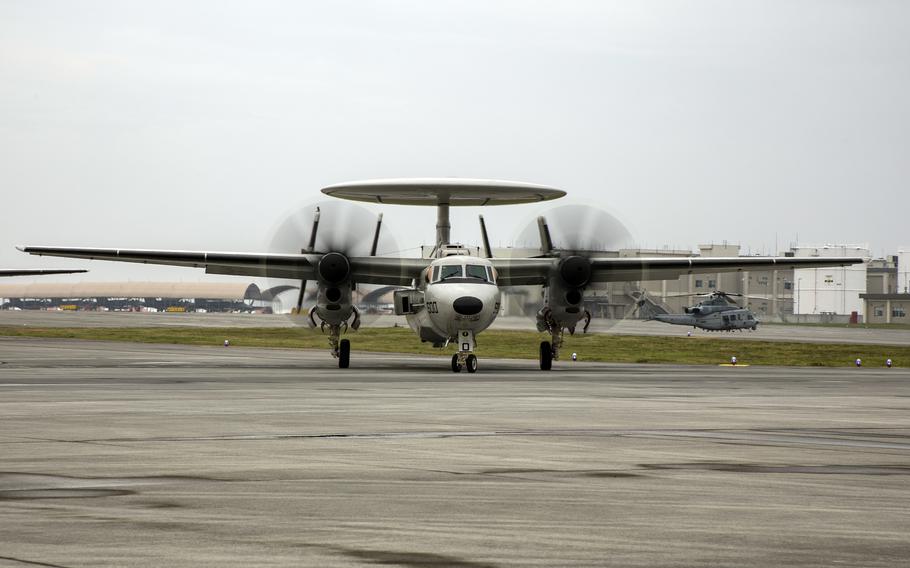
An E-2D Advanced Hawkeye taxis at Marine Corps Air Station Iwakuni, Japan, Aug. 9, 2017. (Aaron Henson/U.S. Marine Corps)
TOKYO – The U.S. State Department has approved the possible sale to Japan of more early warning planes and support equipment worth an estimated $1.38 billion, the Defense Department said this week.
The department’s Defense Security Cooperation Agency notified Congress on Tuesday of the plan to provide E-2D Advanced Hawkeye airborne early warning and control aircraft, according to a notice posted on the agency’s website Tuesday.
Japan has asked for up to five of the aircraft, according to the statement.
Northrop Grumman, the aircraft’s manufacturer, describes the Advanced Hawkeye as a “digital quarterback” designed to “manage the mission and keep our net-centric carrier battle groups out of harm’s way.”
The aircraft provides “expanded battlespace awareness, especially in the area of information operations delivering battle management, theater air and missile defense, and multiple sensor fusion capabilities in an airborne system,” the company states on its website.
Japan already operates three E2-Ds and 10 older E2-C Hawkeyes from Misawa Air Base in northeast Japan and Naha Air Base, Okinawa, a Japan Air Self-Defense spokesman said by phone Thursday. Government spokespeople in Japan customarily speak to the media on condition of anonymity.
Japan began flying Advanced Hawkeyes in 2019.
The goal of acquiring the planes was to “strengthen intelligence, surveillance and reconnaissance capabilities in airspace around Japan, including vast airspace on the Pacific side,” Japan’s government said in its budget that year.
The U.S. Navy’s Carrier Airborne Early Warning Squadron 125, part of Carrier Air Wing 5, flies E-2Ds from Marine Corps Air Station Iwakuni, Japan.
The squadron was the first to deploy with the aircraft, MCAS Iwakuni states on its website.
“The E-2D Advanced Hawkeye … features a state-of-the-art radar with a two-generation leap in capability and upgraded aircraft systems that will improve supportability and increase readiness,” the website states.
The two engine, turboprop aircraft is often referred to as the "Hummer," the website states.
“Its principal mission is command and control of airborne, surface, and battlefield assets,” the website states. “This includes long range detection of hostile forces, strike control at sea, coordination and control for power projection ashore and fleet air defense.”